What would the Caribbean do without spices? Jamaica is internationally known for its ‘jerk’ meats/foods. Meats are properly seasoned with select spices (pepper, onions, etc.) and the result is a finger licking delicacy.
Grenada, known as the ‘Isle of Spice’ will create or provide a lesson in gastronomic dining, uses spices that can only be had in that region. So is the Island of Guadeloupe – it is about the spices whether it is served in ice cream, coffee, sweets and any delicacy your mind can dream of. And the good thing, you can bring this home as a reminder of your travel experience.
One caution regarding certain spices that are pepper based: if you have no tolerance for spicy food, I would suggest you always order very mild.
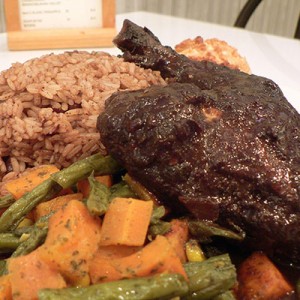
Jamaican Jerk Spice
Jerk is a style of cooking native to Jamaica in which meat is dry-rubbed or wet marinated with a very hot spice mixture called Jamaican jerk spice. Jerk seasoning is traditionally applied to pork and chicken. Modern recipes also apply jerk spice mixes to fish, shrimp, shellfish, beef, sausage, lamb, vegetables, and tofu. Jerk seasoning principally relies upon two items: allspice (called “pimento” in Jamaica) and Scotch bonnet peppers. Other ingredients may include cloves, cinnamon, scallions, nutmeg, thyme, garlic, brown sugar, ginger, and salt.
The term jerk is said to come from the word charqui, a Spanish term of Quechua origin for jerked or dried meat, which eventually became jerky in English.
Jerk is also derived from the action of jerking, which referred to poking meat with holes so that flavor could more easily be absorbed.
The term jerk spice (also commonly known as Jamaican jerk spice) refers to a spice rub. The word jerk refers to the spice rub, wet marinade, and to the particular cooking technique. Jerk cooking has developed a following in US and Western European cosmopolitan urban centers with Caribbean/West Indian communities.
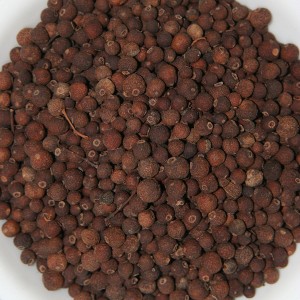
Allspice
Allspice, also called Jamaica pepper or pimento, is the dried unripe fruit (berries, used as a spice) of the Pimento Tree (Pimenta dioica), a midcanopy tree native to the Greater Antilles, southern Mexico, and Central America, now cultivated in many warm parts of the world. The name ‘allspice’ was coined as early as 1621 by the English, who thought it combined the flavour of cinnamon, nutmeg, and cloves.
Allspice is one of the most important ingredients of Caribbean cuisine. It is used in Caribbean jerk seasoning (the wood is used to smoke jerk in Jamaica, although the spice is a good substitute), in moles, and in pickling; it is also an ingredient in commercial sausage preparations and curry powders.
In the West Indies, an allspice liqueur called “pimento dram” is produced.
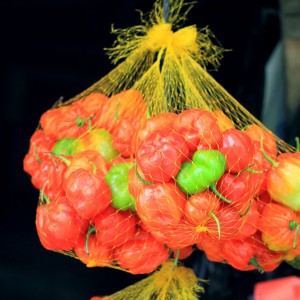
Scotch Bonnet Pepper
Scotch bonnet, also known as Caribbean red peppers is a variety of chili pepper. Found mainly in the Caribbean islands, it is also in Guyana (where it is called the ball-of-fire pepper). It is named for its resemblance to a Tam o’ Shanter hat. Most Scotch bonnets have a heat rating of 100,000–350,000 Scoville units. For comparison, most jalapeño peppers have a heat rating of 2,500 to 8,000 on the Scoville scale. However there are completely sweet varieties of Scotch bonnet grown on some of the Caribbean islands, called cachucha peppers.
These peppers are used to flavor many different dishes and are often used in hot sauces and condiments. The Scotch bonnet has a sweeter flavor and stouter shape, distinct from its habanero cousin with which it is often confused, and gives jerk dishes (pork/chicken) and other Caribbean dishes their unique flavor.
Scotch bonnets are mostly used in Antiguan, Kittitian, Anguilan, Dominican, St. Lucian and St Vincentian, Grenadian, Trinidadian, Jamaican, Barbadian, Guyanese, Surinamese, Haitian and Cayman cuisine and pepper sauces, though they often show up in other Caribbean recipes.
Fresh, ripe scotch bonnets change from green to colours ranging from yellow to scarlet red.
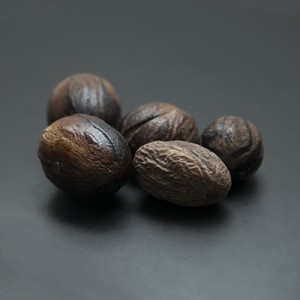
Nutmeg
The common or fragrant nutmeg, is mostly cultivated in Indonesia and in the Caribbean, especially in Grenada.
In the Caribbean, nutmeg is often used in drinks such as the Bushwacker, Painkiller, and Barbados rum punch. Typically, it is just a sprinkle on the top of the drink.
The pericarp (fruit/pod) is used in Grenada to make jam, or is finely sliced, cooked with sugar, and crystallised to make a fragrant candy.
The national flag of Grenada, adopted in 1974, shows a stylised split-open nutmeg fruit.
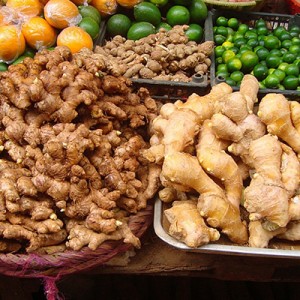
Ginger
Ginger is a flowering plant, whose rhizome, ginger root or simply ginger, is widely used as a spice or a folk medicine.
In the Caribbean, ginger is a popular spice for cooking and for making drinks such as sorrel, a drink made during the Christmas season. Jamaicans make ginger beer both as a carbonated beverage and also fresh in their homes. Ginger tea is often made from fresh ginger, as well as the famous regional specialty Jamaican ginger cake
One traditional medical form of ginger historically was called “Jamaica ginger”; it was classified as a stimulant and carminative and used frequently for dyspepsia, gastroparesis, slow motility symptoms, constipation or colic. It was also frequently employed to disguise the taste of medicines.
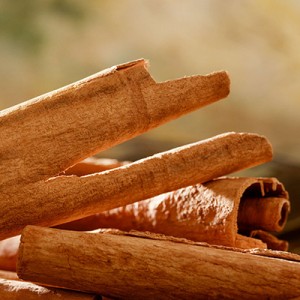
Cinnamon
Cinnamon bark is used as a spice. It is principally employed in cookery as a condiment and flavoring material. It is used in the preparation of chocolate, especially in Mexico, which is the main importer of cinnamon.
Cinnamon is common in cakes & breads, biscuits, sauces, jams and even puddings. Many pickling spice blends, relishes and gravies also contain cinnamon.
West Indian Curries often use Garam Masala, which cinnamon is a key ingredient. This famous spice blend can be used to season meats, vegetables and even stews.
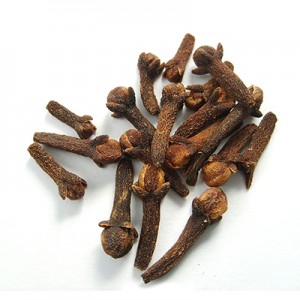
Clove
Cloves may be used to give aromatic and flavor qualities to hot beverages, often combined with other ingredients such as lemon and sugar.
They are a common element in spice blends such as pumpkin pie spice and speculoos spices.
In Mexican cuisine, cloves are best known as clavos de olor, and often accompany cumin and cinnamon.
A major component of clove taste is imparted by the chemical eugenol, and the quantity of the spice required is typically small. It pairs well with cinnamon, allspice, vanilla, red wine and basil, as well as onion, citrus peel, star anise, or peppercorns.
For more ideas on Caribbean Spices visit MarryCaribbean on Pinterest.
References
wikipedia.org/wiki/Jamaican_jerk_spice
wikipedia.org/wiki/Allspice
wikipedia.org/wiki/Scotch_bonnet_(pepper)
wikipedia.org/wiki/Nutmeg
wikipedia.org/wiki/Cinnamon
wikipedia.org/wiki/Ginger
wikipedia.org/wiki/Clove



































